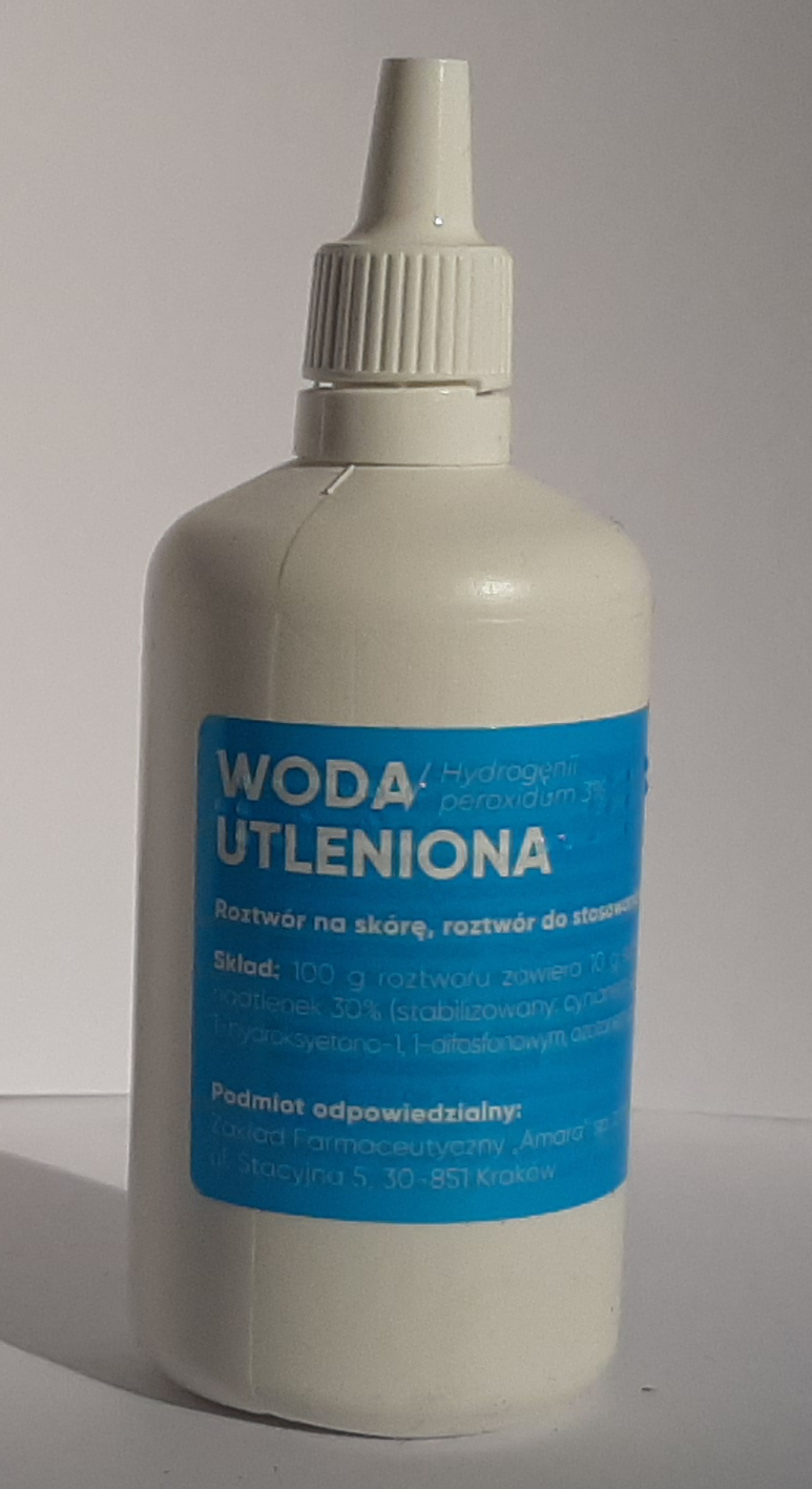
Hydrogen dioxide
liquid
1.45 g/cm³
H2O2
colourless (concentrated solution turns pale blue)
Hydrogen peroxide, or hydrogen peroxide, is an inorganic chemical compound, one of the reactive forms of oxygen; the boiling point of H2O2 is 150.2°C, which is about 50°C higher than that of water; in practice, hydrogen peroxide will undergo potentially explosive thermal decomposition if heated to this temperature; it can be safely distilled at lower temperatures under reduced pressure, despite its high reactivity, pure hydrogen peroxide is a stable substance and, when stored in optimal conditions, can be stored for years; the most important factors increasing the decomposition rate are: high pH value, high temperatures, UV radiation, the presence of transition metal salts and all kinds of impurities
The use of hydrogen peroxide depends on its concentration; 3% solutions are the most popular and are used as disinfectants for wounds and cuts, for the treatment of respiratory diseases (by rinsing the mouth); 3-15% solutions are usually used as active oxygen-based bleach in household chemicals, 3-12% solutions are used in hairdressing to dye and lighten hair; solutions with a concentration of 30%-35% are called perhydrol and are used as a strong oxidizing agent in the chemical industry for the production of organic dyes; hydrogen peroxide with a concentration of 85-98% is not available for common use, it is used as an oxidizer for rocket fuel and submarine fuel
Hydrogen peroxide was first obtained by Louis Thénard in 1818 by reacting barium peroxide with nitric acid; one of the initial uses of hydrogen peroxide was the renovation of old paintings; this was done by eliminating sulfur compounds from the surface of the paintings; hydrogen peroxide is used as a defensive weapon by the Bombardier beetle; these insects mix H2O2 with hydroquinone at high temperatures, creating a spray that is lethal to all their enemies; hydrogen peroxide is very effective as a weak solution for plants, it is used to treat root rot and improve root development by decomposing and releasing oxygen; hydrogen peroxide is formed naturally in the atmosphere when the ozone layer meets water, when unstable ozone meets water, an additional oxygen molecule separates from the trioxide and combines with water, resulting in the formation of carbon dioxide and hydrogen peroxide, so that when it rains small amounts of hydrogen peroxide are produced


